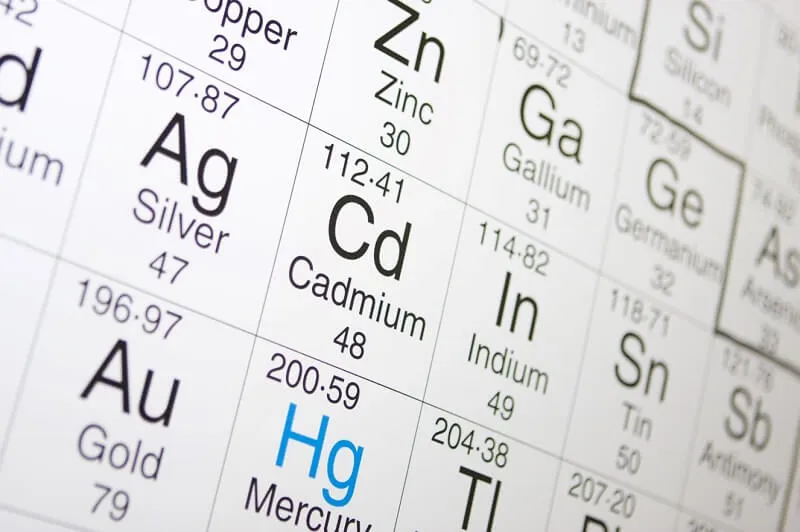Understanding the Origins of Heavy Metals in Everyday Foods
Introduction
The issue of heavy metal contamination in food has gained renewed attention, particularly following a comprehensive 2021 US Congressional Report highlighting elevated metal levels in infant food. Recent revelations of high lead content in children’s fruit puree pouches have further underscored the urgency of addressing this concern. Two groundbreaking studies, set to be presented at the 2023 Society for Risk Analysis Annual Conference, delve into the correlation between exposure to heavy metals in food and the associated risks of cancers and other serious health implications.

RELATED ARTICLE:Evaluating the health risks associated with dietary exposure to metals
Understanding the Source
Food crops have the potential to absorb heavy metals from contaminated soil, air, and water. Consequently, everyday foods, from rice and cereals to nuts and spinach, may contain traces of hazardous heavy metals such as lead, arsenic, and cadmium. The studies, led by Dr. Felicia Wu, a distinguished food scientist from Michigan State University, aim to provide a more comprehensive understanding of the health risks posed by exposure to these heavy metals.

Dr. Felicia Wu, the John A. Hannah Distinguished Professor, has brought her extensive expertise to Michigan State University, where she holds appointments in the Department of Food Science and Human Nutrition and the Department of Agricultural, Food, and Resource Economics. With a profound focus on understanding the impact of foodborne diseases, Dr. Wu’s research delves into the intricate relationship between nutrition, toxins, and the development of effective, cost-efficient strategies to enhance food safety.

Having earned her Ph.D. in Engineering and Public Policy from Carnegie Mellon University, Dr. Wu has contributed significantly to the field of policy research. Her commitment to advancing knowledge and addressing critical issues led her to serve as an Associate Policy Researcher at the RAND Corporation following her graduation. Prior to joining Michigan State University, she held the position of Associate Professor of Environmental and Occupational Health at the University of Pittsburgh, showcasing her dedication to exploring the intersection of environmental factors and public health.
Health Risks Associated with Lead, Arsenic, and Cadmium
Dr. Wu’s first study offers a thorough evaluation of the health risks linked to dietary exposure to lead, arsenic, and cadmium. The research team, which includes postdoctoral research fellow Charitha Gamlath and Ph.D. student Patricia Hsu, collected data on the dietary intake of each metal from various sources, including food and water samples, as well as existing studies and reports. The findings emphasize the significant associations between dietary exposure and adverse health effects, considering both cancer and non-cancer health outcomes.

Lead, a toxic metal found in sources like old paint and contaminated soil, demonstrated moderate to high risk scores for various cancers, including lung, kidney, bladder, stomach, and brain cancers. Arsenic, a naturally occurring toxic element, displayed moderate to high risk scores for cancers such as skin, bladder, lung, kidney, and liver cancers. Similarly, cadmium, a toxic metal found in nuts and leafy green vegetables, presented moderate to high risk scores for cancers like prostate, renal, bladder, breast, pancreatic, and endometrial cancers.
Implications for Food Safety and Regulations
The findings from these studies carry significant implications for food safety regulations, public health policies, and consumer awareness. Recognizing the health risks associated with heavy metal exposure prompts a critical reevaluation of existing safety standards and necessitates proactive measures to mitigate potential harm.
Arsenic Exposure and Cancer Risk
In a second study, Dr. Wu, along with Ph.D. student Rubait Rahman, conducted a quantitative cancer risk assessment specifically for food products in the United States containing inorganic arsenic. Preliminary estimates suggest a concerning link between inorganic arsenic consumption and over 6,000 additional cases of bladder and lung cancers, along with 7,000 cases of skin cancers annually in the United States.
Certain food products, including rice, wheat, and leafy green vegetables, were identified as having higher cancer risks. The study relied on a comprehensive review of scientific literature, incorporating data from regulatory agencies like the U.S. Food and Drug Administration (FDA) and the U.S. Department of Agriculture (USDA), to assess the cancer risk attributable to inorganic arsenic exposure through different food products.

READ MORE ARTICLES ABOUT CANCER:Shedding Light on Types, Treatment, and Hope About Childhood Cancers
Conclusion
As the world grapples with the increasing awareness of heavy metal contamination in everyday food items, these studies shed light on the urgent need for concerted efforts to address this public health concern. The implications extend beyond individual choices, calling for updated regulations, enhanced public health strategies, and increased consumer awareness to safeguard against the potential health risks associated with heavy metal exposure in our diets.